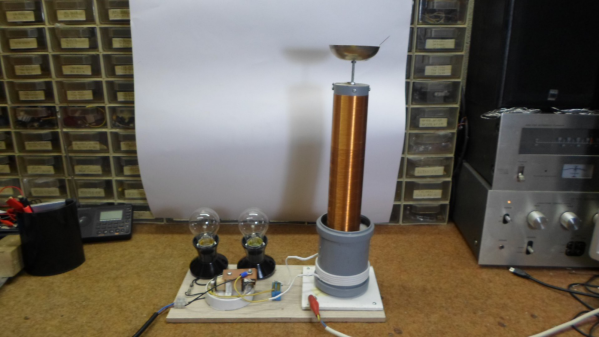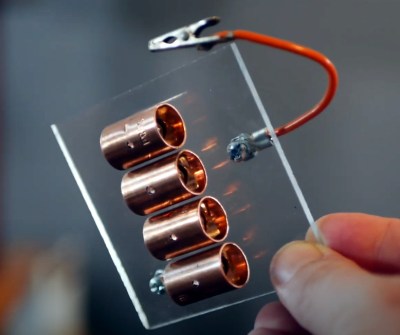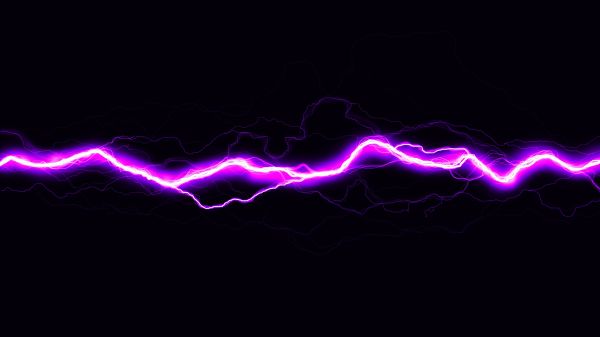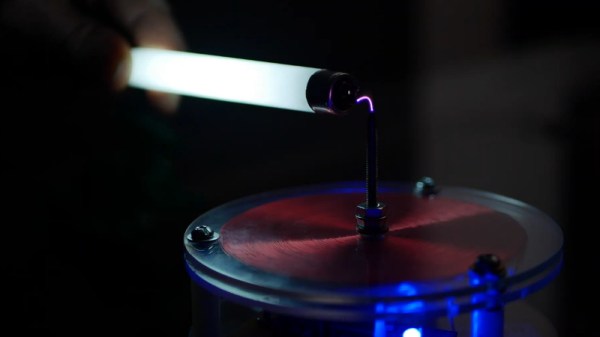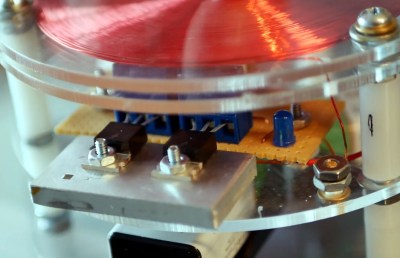Join us on Wednesday, March 31 at noon Pacific for the Physics of Lightning Hack Chat with Greg Leyh!
Of all the things that were around to terrify our ancestors, lightning must have been right up there on the list. Sure, the savannahs were teeming with things that wanted to make lunch out of you, but to see a streak of searing blue-white light emerge from a cloud to smite a tree out of existence must have been a source of dread to everyone. Even now, knowing much more about how lightning happens and how to protect ourselves from it, it’s still pretty scary stuff to be around.
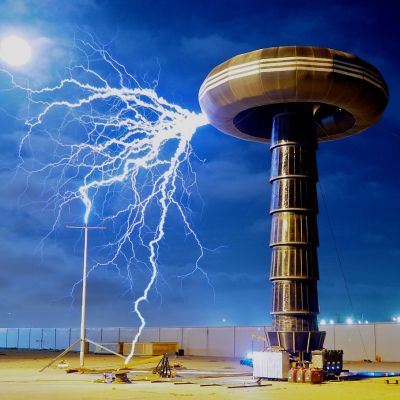 But for as much as we know about lightning, there are plenty of unanswered questions about its nature. To get to the bottom of this, Greg Leyh wants to build a lightning machine of gargantuan proportions: a pair of 120 foot (36 m) tall Tesla towers. Each 10-story tower will generate 8.8 million volts and recreate the conditions inside storm clouds. It’s an ambitious goal, but Greg and his team at Lightning on Demand have already built and demonstrated a 1/3-scale prototype Tesla tower, which is impressively powerful in its own right.
But for as much as we know about lightning, there are plenty of unanswered questions about its nature. To get to the bottom of this, Greg Leyh wants to build a lightning machine of gargantuan proportions: a pair of 120 foot (36 m) tall Tesla towers. Each 10-story tower will generate 8.8 million volts and recreate the conditions inside storm clouds. It’s an ambitious goal, but Greg and his team at Lightning on Demand have already built and demonstrated a 1/3-scale prototype Tesla tower, which is impressively powerful in its own right.
As you can imagine, there are a ton of engineering details that have to be addressed to make a Tesla tower work, not to mention the fascinating physics going on inside a machine like this. Greg will stop by the Hack Chat to answer our questions about the physics of lightning, as well as the engineering needed to harness these forces and call the lightning down from the sky.
 Our Hack Chats are live community events in the Hackaday.io Hack Chat group messaging. This week we’ll be sitting down on Wednesday, March 31 at 12:00 PM Pacific time. If time zones have you tied up, we have a handy time zone converter.
Our Hack Chats are live community events in the Hackaday.io Hack Chat group messaging. This week we’ll be sitting down on Wednesday, March 31 at 12:00 PM Pacific time. If time zones have you tied up, we have a handy time zone converter.
Click that speech bubble to the right, and you’ll be taken directly to the Hack Chat group on Hackaday.io. You don’t have to wait until Wednesday; join whenever you want and you can see what the community is talking about.
Continue reading “Physics Of Lightning Hack Chat”



